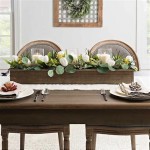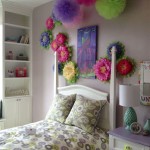Tapestry Decor Ideas
Tapestry wall hangings offer a versatile and artistic approach to interior design, adding texture, color, and personality to any space. From traditional woven designs to modern printed art, tapestries can transform a room, creating a focal point or enhancing an existing aesthetic. Choosing the right tapestry and placement requires consideration of the room's style, size, and the desired atmosphere.
Choosing the Right Tapestry
The vast array of available tapestry designs allows for diverse stylistic expressions. Consider the existing decor and the desired ambiance when selecting a tapestry. Nature-inspired scenes can bring a sense of tranquility, while abstract patterns offer a modern, artistic touch. Geometric designs add visual interest, and depictions of historical figures or mythological scenes create a sense of classic elegance. The material of the tapestry also plays a crucial role. Woven tapestries add a traditional feel, while printed tapestries on fabrics like polyester offer a lighter, more contemporary option.
Size is a critical factor when choosing a tapestry. A large tapestry can serve as a dominant focal point, while smaller tapestries can be used to create a gallery wall or fill smaller spaces. Measure the wall space carefully and consider the proportions of the room to ensure the tapestry complements the existing furniture and decor. A tapestry that is too large can overwhelm a small room, while a tapestry that is too small can appear lost on a large wall.
Color palettes significantly impact the overall aesthetic. Consider the existing color scheme of the room and choose a tapestry that either complements or contrasts with the wall color and other furnishings. A tapestry with vibrant colors can energize a space, while a tapestry with muted tones can create a calming and sophisticated atmosphere. Pay attention to the dominant colors in the tapestry and how they interact with the room's lighting.
Placement and Hanging Techniques
Proper placement enhances the tapestry's visual impact. A common placement is above a bed or sofa, creating a focal point for the room. Tapestries can also be used to fill awkward wall spaces or to define different areas within an open-plan living space. Consider the flow of the room and the furniture arrangement to determine the optimal placement for the tapestry. Avoid placing tapestries in areas with high humidity or direct sunlight, which can damage the fabric over time.
Several hanging methods exist, each with its own advantages. Using a rod and clips offers a classic, elegant look and allows for easy removal and cleaning. Alternatively, thumbtacks or pushpins can be used for lighter tapestries on less delicate walls. Adhesive strips provide a damage-free option for renters or those who prefer not to make holes in their walls. For larger, heavier tapestries, consider using specialized tapestry hangers or consulting a professional for secure installation.
The height at which a tapestry is hung influences the overall balance of the room. Generally, the center of the tapestry should be at eye level. However, this can be adjusted depending on the surrounding furniture and the desired effect. For example, a tapestry hung above a sofa might be placed slightly lower to create a cohesive visual connection.
Incorporating Tapestries with Different Decor Styles
Tapestries can seamlessly integrate into various interior design styles. In a bohemian setting, tapestries with intricate patterns and vibrant colors enhance the eclectic vibe. For a minimalist space, a simple, geometric tapestry can add a touch of texture and visual interest without overwhelming the aesthetic. In a more traditional setting, a woven tapestry depicting a classical scene can complement antique furniture and elegant decor.
Layering tapestries with other decorative elements can create a dynamic and visually rich environment. Consider placing a tapestry behind a shelving unit to add depth and visual interest. Alternatively, layering a smaller tapestry over a larger one can create a unique, textured focal point. Experiment with different arrangements and combinations to achieve the desired effect.
Textile pairings enhance the overall aesthetic and create a cohesive look. Consider incorporating throw pillows, rugs, or curtains with colors or patterns that complement the tapestry. This creates a sense of harmony and visual continuity within the room. Matching textures can further enhance the cohesive effect, creating a warm and inviting atmosphere.

How To Decorate With Wallhangings And Tapestries House Garden

40 Best Tapestry Bedroom Ideas With Bohemian Vibes Homemydesign

Revamp Your Home Decor With Best Wall Tapestry Ideas Designer Printed

Tapestry 18 Rooms Where Wall Hangings Steal The Show Architectural Digest

N New Design Mandala Tapestry Wall Hanging Decor At 250 Piece Hangings In Jaipur Id 13931582748

Like The Idea Of Hanging In Corner

8 Ways To Hang A Tapestry At Home How Interiors By Jacquin

Boho Elephant Tapestry For Dorm Girls

Moth Tapestry Mystical Gothic Home Decor Dark Room Ideas Modern Witch Wall Hanging Wiccan Interior Witchcraft Witchy Aesthetic

Large Wall Tapestry Decor Steals







